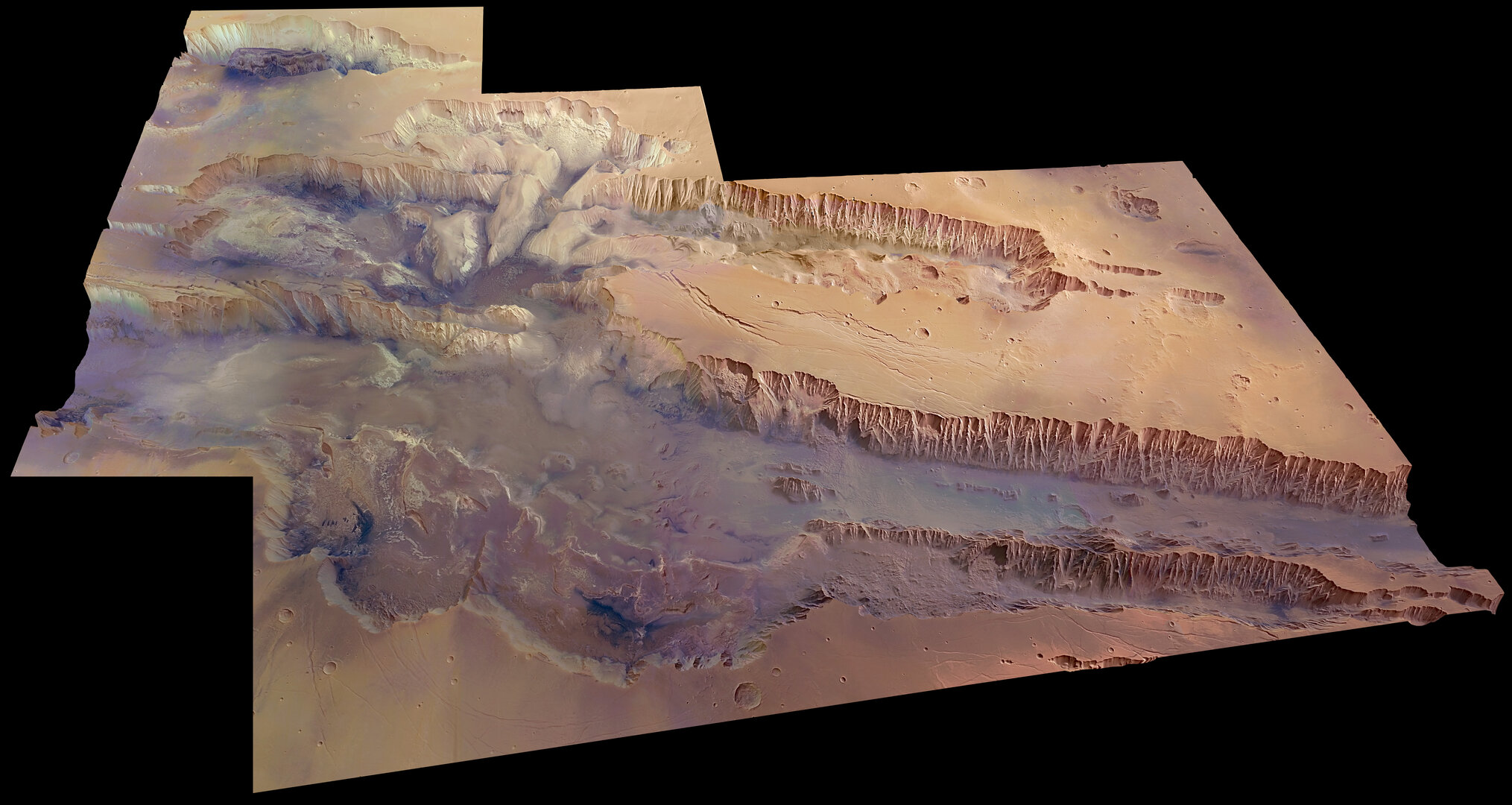New Mars Forums
You are not logged in.
- Topics: Active | Unanswered
Announcement
#76 2023-09-30 19:20:59
- Void
- Member
- Registered: 2011-12-29
- Posts: 9,048
Re: Caves as Initial Footholds on Mars
Yes, I seem to be catching on to the basics of your materials. It seems a good contribution, I will borrow some of it, but keep in mind where it came from.
Done
Is it possible that the root of political science claims is to produce white collar jobs for people who paid for an education and do not want a real job?
Offline
Like button can go here
#77 2023-09-30 19:42:25
- Steve Stewart
- Member
- From: Kansas City (USA)
- Registered: 2019-09-21
- Posts: 161
- Website
Re: Caves as Initial Footholds on Mars
Void post #72
For Mars, we might suppose to reach liquid aquifers.
Yes, I think so too. Even if the surrounding area (walls/ceiling/floor) wasn't an aquifer, but had 5% to 10% ice in it, I would think it would thaw. If you look at the images in #70 with the frost line, and imagine that being rock/gravel/sand, with ice, I would think when the area inside of the red dashed line thawed, and turned to water it would run downward. I would think each segment could retrieve water by simply drilling a hole in the floor and installing a sump pump. It seems like we could retrieve quite a bit of water that way. Maybe not enough for rocket fuel, but enough to keep the plants watered, and enough for humans to drink.
Offline
Like button can go here
#78 2023-09-30 19:55:21
- Void
- Member
- Registered: 2011-12-29
- Posts: 9,048
Re: Caves as Initial Footholds on Mars
Quote:
Steve Stewart
Member
From: Kansas (USA)
Registered: 2019-09-21
Posts: 124
Email Website
Void post #72
For Mars, we might suppose to reach liquid aquifers.Yes, I think so too. Even if the surrounding area (walls/ceiling/floor) wasn't an aquifer, but had 5% to 10% ice in it, I would think it would thaw. If you look at the images in #70 with the frost line, and imagine that being rock/gravel/sand, with ice, I would think when the area inside of the red dashed line thawed, and turned to water it would run downward. I would think each segment could retrieve water by simply drilling a hole in the floor and installing a sump pump. It seems like we could retrieve quite a bit of water that way. Maybe not enough for rocket fuel, but enough to keep the plants watered, and enough for humans to drink.
Of course, that could be dependent on location and how deep you go. Valles Marinera shows a Hydrogen signature the size of Holland. We don't know what the nature of that is, ice or brine or Hydrated minerals, but your method would get water in any case, and that location is about as temperate as Mars gets.
https://www.esa.int/Science_Exploration … and_Canyon Image Quote: 
It is in Candor Chaos, sort of a wide space in the canyon.
While it is a rift valley, I believe that water floods and lava flows have also helped to carve it so lava tubes may not be out of the question. The lava is likely to have come from the Tharsis region where the big shield volcanoes are.
This seems to support the lava notion: https://www.sciencedirect.com/science/a … 7314000316
Quote:
A network of lava tubes as the origin of Labyrinthus Noctis and Valles Marineris on Mars
So, for the rift valley, I am going to venture a hope that lava tubes and skylights have been covered over with wind drive sediments over time. If so, then perhaps they can be carved of the sedimentary deposits to give a useful lava tube near where the Hydrogen signature are.
Done
Last edited by Void (2023-09-30 20:11:21)
Is it possible that the root of political science claims is to produce white collar jobs for people who paid for an education and do not want a real job?
Offline
Like button can go here
#79 2023-12-05 08:35:34
- Mars_B4_Moon
- Member
- Registered: 2006-03-23
- Posts: 9,776
Re: Caves as Initial Footholds on Mars
Into The Deep: ESA’s CAVES Campaign
https://astrobiology.com/2023/11/into-t … paign.html
Recently six astronauts turned ‘cavenauts’ from five space agencies headed underground in Slovenia, where they are currently living and working for the week. To keep the element of exploration, astronauts themselves do not know the exact location.
The goal is to run scientific experiments while managing the psychological toll of being in an extreme environment with a multinational crew.
Following a week’s training above ground, including lectures from experts and practical exercises, the team is now underground searching for signs of life that have adapted to the extreme conditions in the caves.
One of the team’s main scientific objectives is to follow the water, a vital resource on- and off- our planet.
Understanding Multiple Pneumatic Conveying Methods
https://www.powderbulksolids.com/pneuma … ng-methods-
Dense phase, lean phase, vacuum, and other types of conveyors can coexist on the same processing line for high efficiency, low total cost of ownership.
Pneumatic tube system and its functionality.
https://medium.com/@yiwuyilengofficial/ … e9bf26dc82
Transportation in Hospitals
https://link.springer.com/chapter/10.10 … 9-6692-7_9
capsule pipelines systems propelling cylindrical containers through networks of tubes by compressed air or by partial vacuum.
The pneumatic tube's strange 150-year journey
https://www.youtube.com/watch?v=sd58w0CXQrM
Offline
Like button can go here